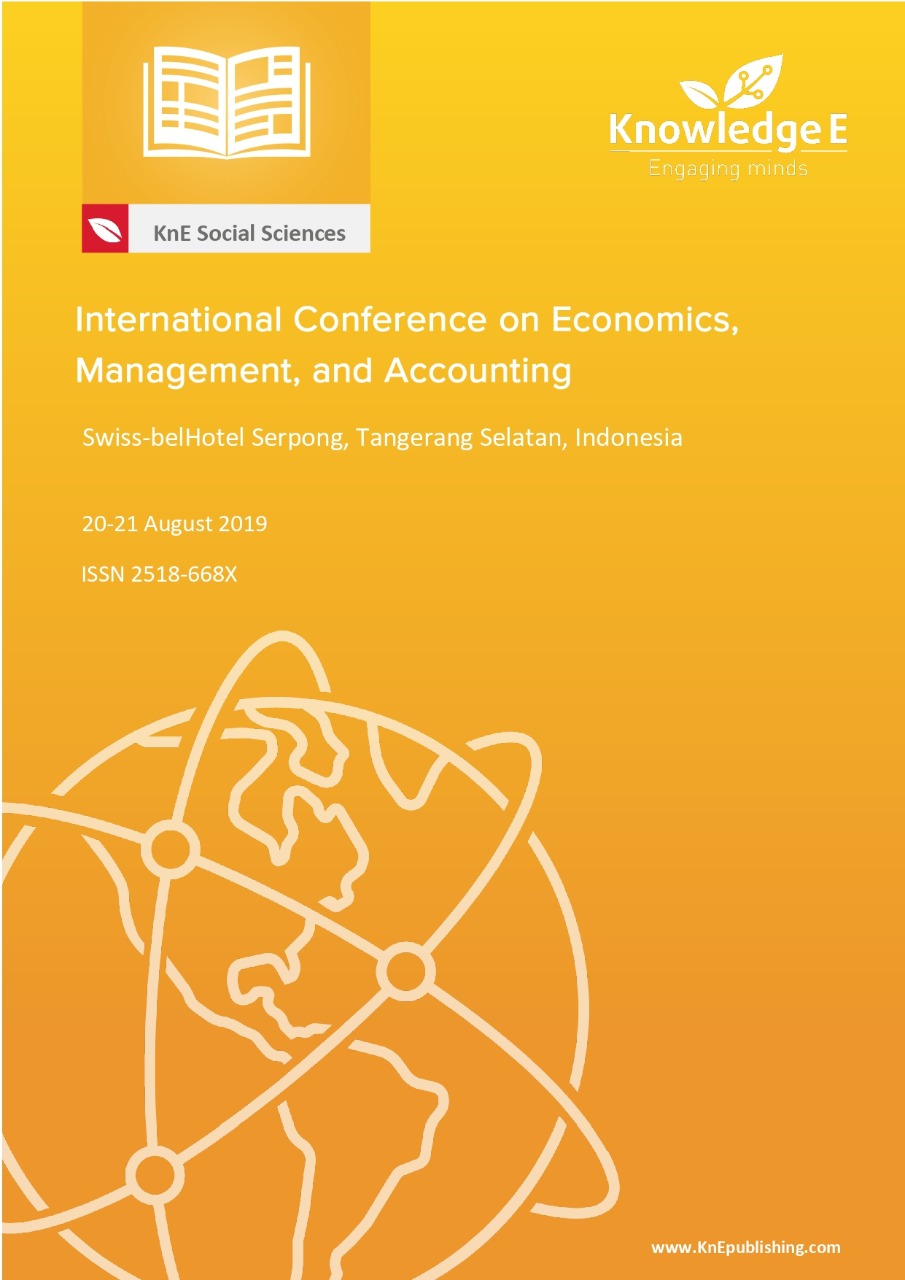Differences in Period I, Period II and Period III Tax Amnesty in Malang City
DOI:
https://doi.org/10.18502/kss.v3i26.5366Abstract
The level of taxpayer compliance in Indonesia in the last five years is quite alarming, taxpayer compliance has not reached the point expected by the government and is verysmallpercentageoftaxpayerswhofulfilltheirobligationstopaytaxes.Toincrease participation in tax payments, the government launched a tax amnesty program. This studyaimstodeterminethedifferencesinperiodI,periodII,andperiodIIItaxamnesty in Malang City. This research includes quantitative descriptive with data collection techniques in the form of a questionnaire method. The population of this study is an individual taxpayer in the Malang Tax Service Office. The sampling technique using purposive sampling method is a taxpayer registered at the Malang Tax Office. Data analysis using descriptive analysis and independent T Test. The results of this study indicate that the period I tax amnesty is more influential on taxpayer compliance than the period II tax amnesty and the period I tax amnesty is more influential on taxpayer compliance than the period III tax amnesty. Based on the results of this study, it is recommendedtoexaminethedifferencesinperiodI,IIandIIItaxamnestyinotherTax Service Offices as a basis for knowing the effectiveness of inter-office tax amnesty in the same region.
References
Ahmed Aly Abdel-Mowla, S. (2012). The Egyptian tax system reforms, investment and tax evasion (2004-2008). Journal of Economic and Administrative Sciences, 28(1), 53–78. https://doi.org/10.1108/ 10264111211218522
Bekoe, W., Danquah, M., & Senahey, S. K. (2016). Tax reforms and revenue mobilization in Ghana. Journal of Economic Studies, 43(4), 522–534. https://doi.org/10.1108/JES-01-2015-0007
Ling, L. M., & Nawawi, N. H. A. (2010). Integrating ICT skills and tax software in tax education: A survey of Malaysian tax practitioners’ perspectives. Campus-Wide Information Systems, 27(5), 303– 317.
https://doi.org/10.1108/10650741011087748
Nguyen, M. T., Nguyen, T. H., & Le, T. T. V. (2017). Tax reform, sectoral restructuring and household welfare in Vietnam. International Journal of Economics and Management, 11(2), 371–391.
Nkundabanyanga, S. K., Mvura, P., Nyamuyonjo, D., Opiso, J., & Nakabuye, Z. (2017). Tax compliance in a developing country. Journal of Economic Studies, 44(6), 931–957. https://doi.org/10.1108/jes-032016-0061
PuiYee,C.,Moorthy,K.,&ChooKengSoon,W.(2017).Taxpayers’perceptionsontaxevasionbehaviour: anempiricalstudyinMalaysia. International Journal of Law and Man- agement, 59(3),413–429.https: //doi.org/10.1108/IJLMA-02-2016-0022
Ritsatos, T. (2014). Tax evasion and compliance; From the neo classical paradigm to behavioural economics, a review. Journal of Accounting and Organizational Change, 10(2), 244–262. https: //doi.org/10.1108/JAOC-07-2012-0059
Sadress,N.,Bananuka,J.,Orobia,L.,&Opiso,J.(2019).Antecedentsoftaxcomplianceofsmallbusiness enterprises: a developing country perspective. International Journal of Law and Management, 61(1), 24–44. https://doi.org/10.1108/IJLMA-10-2017-0234
Sari, R. I., & Nuswantara, D. A. (2017). The Influence of Tax Amnesty Benefit Perception to Taxpayer Compliance. Jurnal Dinamika Akuntansi, 9(2), 176–183. https://doi.org/10.15294/jda.v9i2.11991
Stark, J. A., & Kirchler, E. (2017). Inheritance tax compliance – earmarking with normative value principles. International Journal of Sociology and Social Policy, 37(7–8), 452–467. https://doi.org/10. 1108/IJSSP-07-2016-0086

